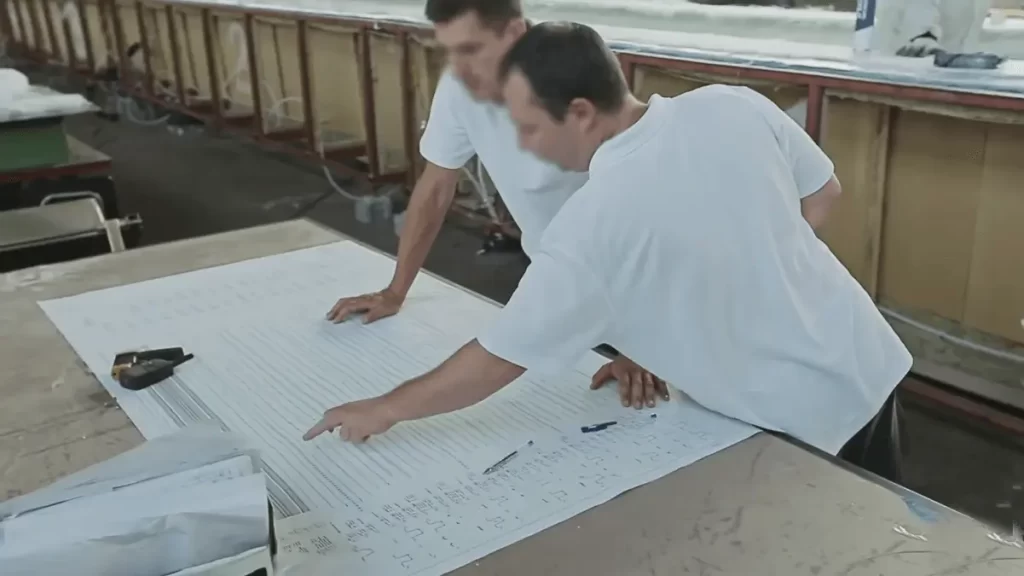What is FRP in Construction?


What is FRP in Construction?
The requirements of modern construction has led to an increased demand for lightweight, durable, and non-corrosive materials. This is prominently visible in the usage of FRP (Fiber-Reinforced Polymer.) FRP stands for Fiber-Reinforced Polymer and is a composite material, which means that it is made from a polymer matrix that is reinforced with fibers. It is stronger, more flexible, and far more durable than steel or concrete. Further, FRP is used in bridges, buildings, and marine structures because it is very easy to install, has high tensile strength, and is extremely resistant to corrosion. As the technology of construction improves, FRP is becoming more and more important for improving the strength and life of structures.
What is FRP?
FRP, or Fiber-Reinforced Polymer, is a composite material consisting of reinforcing fibers embedded in a polymer matrix. These fibers offer structural strength as well as stiffness, and the polymer matrix provides basic support by holding them together, shielding them from environmental damage, and bearing some of the load. FRP is much lighter than steel or concrete and offers great tensile strength and corrosion resistance which makes it easy to use in harsh areas. For this purpose, it is widely used in construction for structural reinforcement and bridge building, but also in industrial routines which have many chemicals as well as need a high strength-to-weight ratio.
Parts of Fiber Reinforced Polymers (FRPs)
The FRP has two main components: reinforcing fibers and a polymer matrix. The fibers serve as the primary source of strength and stiffness in an FRP composite. Various types of fibers are used based on the stiffness, recovery, and flexibility needed from the material. Most common fibers include glass fiber (GFRP) which is cheap and offers resistance to corrosion; carbon fiber (CFRP) which is high in tensile strength and long lasting; aramid fiber (AFRP) which offers high resistance to impact and toughness; and basalt fiber (BFRP) which is superb in resisting thermal and corrosive elements.
Benefits of Using FRP in Construction
The use of fiberglass reinforced plastic (FRP) composite materials as compared to steel, aluminum, and concrete in construction are more economical. A major benefit is the strength to weight ratio. It is lighter compared to steel and concrete but has comparable or even higher tensile strength. This makes it easier to transport and install which reduces structural loads. FRP materials are beneficial for construction of high-rise buildings and bridges.
FRP is a much more environmentally friendly option when looked from an environmental point of view. Its features such as low maintenance cost, prolonged lifespan for structures, and minimal energy requirement for installation and transport makes it quite sustainable. Developers can decrease their carbon emissions by using FRP, making construction practices more eco-friendly.
FRP’s Application in Construction
Professionals from different sectors of construction widely use FRP composite due to its light weight and flexibility. FRP is most commonly used in bridge construction, for decks and beams as well as in architectural infrastructure. Aside from being lightweight and unmold able FRP is very useful in preserving and reinforcing older structures such as bridges by reducing the overall cost and maintenance needed.
FRPs are also used for structural strengthening and in seismic retrofitting. Older concrete buildings need to be reinforced to modern-day safety standards, often using external reinforcements to increase their load capacity. Carbon Fiber Reinforced Polymers (CFRP) are commonly used externally as wraps on columns, beams, and walls to enable greater resistance against earthquakes and other stresses.
FRPs are extremely useful for marine and offshore structures due to their corrosion resistance. They guarantee security and repair maintenance for docks, piers, seawalls, and other coastal infrastructural works that are constantly hit with saltwater and severe weather. Traditional materials would deteriorate rapidly overtime when used in these regions but with the use of FRPs, structural integrity is ensured long term.
As FRPs have extreme temperature and chemical tolerance, they are used in industrial and chemical processing plants. Found is oil refineries and wastewater treatment plants, FRPs can be found in pipelines, tanks, and protective linings. Moreover, modern lightweight and durable facades of buildings make use of FRP as well.
The aerospace and transportation sector utilize FRP due to its superior strength to weight ratio. It is applied in airports, railway stations, and even in public transit systems for added structural support at reduced weight. In addition, FRP is widely used in automobile and aircraft construction to enhance fuel efficiency and overall performance.
Challenges and Limitations of FRP in Construction
Regardless of its many benefits, FRP comes with some constraints. One of the issues stems from having an initial cost that is relatively higher than the construction traditional materials steel and concrete. Although FRP affords long term savings owing to its durability and low maintenance required, the upfront spending required may discourage some construction projects. As the processes of manufacturing and volume supply increase, it is predicted that the cost of FRP will tend to decrease with time.
Lack of fire resistance is another limitation of FRP. Unlike steel and concrete, FRP is flammable, losing integrity at high temperatures. Mounting fire retardant coatings raise the need to FRP along with add other restrictions in fire risk areas, to adhere to building codes compliant standards heightens cost. FRP is also susceptible to damage from UV radiation meaning prolonged direct sunlight can break down certain types of FRP materials. To stop this, protective coatings or UV resistant paints tend to be used.
More advanced procedures and expertise is needed while repairing FRP structures compared to traditional materials. Unlike steel and concrete which are easy to weld and patch, FRP requires very specific repair methods. Because damage in FRP components might incur complete replacement instead of simple repairs, costs could soar in certain situations.
Conclusion
Lightweight, high strength, and highly resistant to corrosion – FRP (Fiber-Reinforced Polymer). This material is changing the construction industry. Superiority in its durability, flexibility and its ease of installation when compared with traditional materials such as steel and concrete enables its use in the construction of bridges, buildings, marine structures and industrial facilities. Furthermore, FRP is emerging as a material of choice for sustainable and durable construction.
Read More: How much are construction supervision costs in USA?

